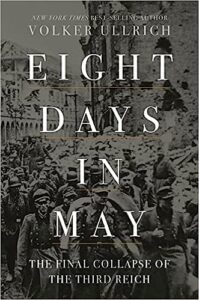HITLER PLANS TO ERADICATE CZECHOSLOVAKIA
Berlin, Germany · May 28, 1938
On this date in 1938 Adolf Hitler informed his senior military commanders of his plans to march into neighboring Czechoslovakia and erase that country from the map. No serious objections were raised by those who heard Hitler ring the death knell for Czechoslovakia and for the European order that had been in place since 1919. Six months earlier Hitler had called his generals together to spell out his plans for war on Germany’s southeastern doorstep, and one of the two nations in his crosshairs, his native Austria, had in fact ended its cartographical existence following the Anschluss (union) with Germany in March 1938—its new name was Ostmark (Eastern March). The second nation targeted by Hitler was Czechoslovakia, a 1919 creation. Hitler had already hacked off a chunk of that country when his army marched into German-speaking Czech Sudetenland on October 1, 1938, following the signing of the Munich Agreement by the leaders of England, France, Germany, and Italy the day before. Earlier, in August, German lawyer and conservative politician Ewald von Kleist-Schmenzin left Germany for England as a secret emissary of Chief of the General Staff Gen. Ludwig Beck and Adm. Wilhelm Canaris, head of the Abwehr (German military intelligence), to meet with Winston Churchill, then simply a member of the British Parliament, to beg his country to stop appeasing Hitler and to see whether England would help those in Germany trying to topple the Nazi government. Churchill allegedly told Kleist-Schmenzin to “first bring us Hitler’s head.” After the head was delivered the conspirators would supposedly get the help they wanted. Actually, it was Kleist-Schmenzin, Canaris, and Beck who lost their heads in the aftermath of the failed July 20, 1944, bomb plot against Hitler. By then Churchill, who for the past four years as prime minister had been leading his nation in a fight to the death with Nazi Germany, had turned a remarkably cold shoulder to plotters like Beck and Claus von Stauffenberg who had nearly succeeded in killing Hitler. To him there was little difference between a Nazi and a good German. Indeed, he heaped scorn on the very people whose actions might have ended the war a year early, saying that the 1944 assassination bid was a case of “the highest personalities in the German Reich murdering one another.”
[amazon_carousel widget_type=”ASINList” width=”600″ height=”200″ title=”Recommended Reading” market_place=”US” shuffle_products=”False” show_border=”False” asin=”0786403721,1605984507,0674636813,0773515313,1590176812,052100358X,0521466687,0553382551,0691116938,0415121345″ /]
German Stamps Commemorating the Heroes on the 20th Anniversary of the Attempt to Assassinate Adolf Hitler on July 20, 1944
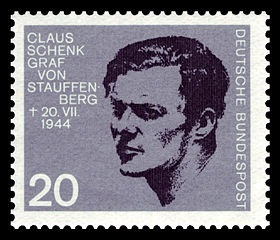 | 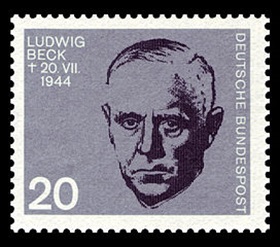 |
Left: Claus von Stauffenberg (b. 1907) was a colonel in the Ersatzheer (Replacement Army) and the driving force behind the July 20, 1944 plot to assassinate Hitler and take control of Germany. For his involvement in the failed bomb plot known as Operation Valkyrie, he was shot in the Bendlerblock (Headquarters of the Army) on the night of July 21, 1944.
![]()
Right: Ludwig Beck (b. 1880) was a German general and Chief of the German General Staff during the early years of the Nazi regime. He became a major leader within the conspiracy against Hitler and would have been provisional head of state had the July 20, 1944 plot succeeded. Beck committed suicide on July 21, 1944.
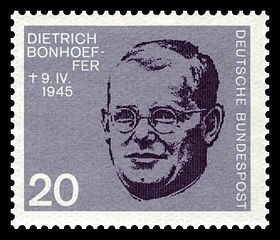 | 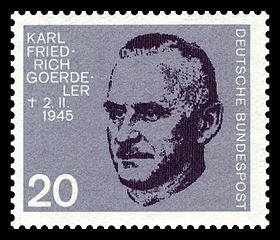 |
Left: Lutheran pastor, theologian, and Nazi dissident, Dietrich Bonhoeffer (b. 1906) was involved in plans by members of Adm. Wilhelm Canaris’ Abwehr (German Military Intelligence) to assassinate Adolf Hitler. He was arrested by the Gestapo in April 1943 and executed by hanging in April 1945, along with Canaris, while they were imprisoned at Flossenbuerg concentration camp in Bavaria.
![]()
Right: A politician, economist, civil servant, and opponent of the Nazi regime, Karl Friedrich Goerdeler (b. 1884) would have served as chancellor of the new government had the July 20, 1944 coup succeeded. After a trial in the notorious People’s Court (Volksgerichtshof), presided over by Judge Roland Freisler, Goerdeler was sentenced to death and executed by hanging on February 2, 1945 at Ploetzensee Prison in Berlin.
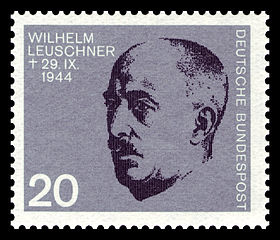 | 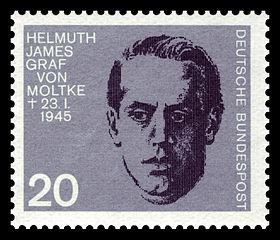 |
Left: In contact with the resistance group around Karl Friedrich Goerdeler, Wilhelm Leuschner (b. 1890) would most likely have become Germany’s vice-chancellor after the July 1944 coup d’état. Arrested in mid-August 1944 and brought before Freisler’s People’s Court, Leuschner was sentenced to death and executed at the end of September 1944 at Ploetzensee Prison in Berlin.
![]()
Right: Helmuth James Graf von Moltke (b. 1907) was a leading human rights advocate in Nazi Germany and a founding member of the Kreisau Circle resistance group. In January 1945, Moltke found himself in Freisler’s People’s Court, along with several of his fellow regime opponents. Moltke was sentenced to death for treason on January 11, 1945, and executed twelve days later at Ploetzensee Prison in Berlin.
German Resistance in the Wehrmacht
![]()

 History buffs, there is good news! The Daily Chronicles of World War II is now available as an ebook for $4.99 on Amazon.com. Containing a year’s worth of dated entries from this website, the ebook brings the story of this tumultuous era to life in a compelling, authoritative, and succinct manner. Featuring inventive navigation aids, the ebook enables readers to instantly move forward or backward by month and date to different dated entries. Simple and elegant! Click
History buffs, there is good news! The Daily Chronicles of World War II is now available as an ebook for $4.99 on Amazon.com. Containing a year’s worth of dated entries from this website, the ebook brings the story of this tumultuous era to life in a compelling, authoritative, and succinct manner. Featuring inventive navigation aids, the ebook enables readers to instantly move forward or backward by month and date to different dated entries. Simple and elegant! Click 











